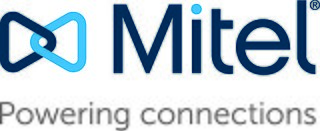
Telefonaktiebolaget LM Ericsson, commonly known as Ericsson, is a Swedish multinational networking and telecommunications company headquartered in Stockholm. The company sells infrastructure, software, and services in information and communications technology for telecommunications service providers and enterprises, including, among others, 3G, 4G, and 5G equipment, and Internet Protocol (IP) and optical transport systems. The company employs around 100,000 people and operates in more than 180 countries. Ericsson has over 57,000 granted patents.
Nortel Networks Corporation (Nortel), formerly Northern Telecom Limited, was a Canadian multinational telecommunications and data networking equipment manufacturer headquartered in Ottawa, Ontario, Canada. It was founded in Montreal, Quebec in 1895 as the Northern Electric and Manufacturing Company. Until an antitrust settlement in 1949, Northern Electric was owned principally by Bell Canada and the Western Electric Company of the Bell System, producing large volumes of telecommunications equipment based on licensed Western Electric designs.
Computer telephony integration, also called computer–telephone integration or CTI, is a common name for any technology that allows interactions on a telephone and a computer to be coordinated. The term is predominantly used to describe desktop-based interaction for helping users be more efficient, though it can also refer to server-based functionality such as automatic call routing.

A voicemail system is a computer-based system that allows users and subscribers to exchange personal voice messages; to select and deliver voice information; and to process transactions relating to individuals, organizations, products, and services, using an ordinary phone. The term is also used more broadly to denote any system of conveying a stored telecommunications voice messages, including using an answering machine. Most cell phone services offer voicemail as a basic feature; many corporate private branch exchanges include versatile internal voice-messaging services, and *98 vertical service code subscription is available to most individual and small business landline subscribers.

Mitel Networks Corporation is a Canadian telecommunications company. The company previously produced TDM PBX systems and applications, but after a change in ownership in 2001, now focuses almost entirely on Voice-over-IP (VoIP), unified communications, collaboration and contact center products. Mitel is headquartered in Ottawa, Ontario, Canada, with offices, partners and resellers worldwide.

Skype for Business Server is real-time communications server software that provides the infrastructure for enterprise instant messaging, presence, VoIP, ad hoc and structured conferences and PSTN connectivity through a third-party gateway or SIP trunk. These features are available within an organization, between organizations and with external users on the public internet or standard phones.

Nortel Meridian is a private branch exchange telephone switching system. It provides advanced voice features, data connectivity, LAN communications, computer telephony integration (CTI), and information services for communication applications ranging from 60 to 80,000 lines.
Selsius Systems was a telecommunications company in Dallas, Texas that developed and marketed some of the first IP telephony gear. It was co-founded by Richard Platt and David Tucker. Selsius was incorporated in 1997 and acquired by Cisco Systems in November, 1998.
Siemens Communications was the communications and information business arm of German industrial conglomerate Siemens AG, until 2006. It was the largest division of Siemens, and had two business units – Mobile Networks and Fixed Networks; and Enterprise.
The following outline is provided as an overview of and topical guide to telecommunication:

Alcatel–Lucent S.A. was a multinational telecommunications equipment company, headquartered in Boulogne-Billancourt, France. It was formed in 2006 by the merger of France-based Alcatel and U.S.-based Lucent, the latter being a successor of AT&T's Western Electric and Bell Labs.
Unified communications (UC) is a business and marketing concept describing the integration of enterprise communication services such as instant messaging (chat), presence information, voice, mobility features, audio, web & video conferencing, fixed-mobile convergence (FMC), desktop sharing, data sharing, call control and speech recognition with non-real-time communication services such as unified messaging. UC is not necessarily a single product, but a set of products that provides a consistent unified user interface and user experience across multiple devices and media types.
TouchWave, Inc., was a privately held Palo Alto, California IP-telephony network switch provider founded in 1997. TouchWave developed a product line called WebSwitch that was designed to replace traditional private telephone exchange systems in small-to-medium-sized companies. WebSwitch was part of a phone system that incorporates communication features provided by the Internet. The rapid success of TouchWave was memorialized with awards and an acquisition by Ericsson Communications for $46M two years after TouchWave was founded. Ericsson continued the TouchWave product line under the name WebCom, but its efforts have been viewed as less than successful.
The Innovative Communications Alliance (ICA) was a telecommunications alliance between Microsoft and Nortel, created in July 2006, to co-develop, integrate, market, sell, and support unified communications products. The goal of the alliance is to make integrated hardware and software solutions that join together voice, video, and data communications without requiring gateways or middleware. Microsoft and Nortel share developing technologies and patents for unified communications products.
Objectworld Communications Corp., formerly ObjectWorld Inc, was a privately held company that provides unified communications software to small- and medium-sized businesses. Objectworld was acquired by Huntsville, Alabama-based ADTRAN Inc.
Unify, is an Atos company headquartered in Munich, Germany and is present in over 100 countries. The company provides software-based enterprise unified communications including voice, Web collaboration, video conferencing and contact center, networking product and services.
CT Connect is a software product that allows computer applications to monitor and control telephone calls. This monitoring and control is called computer-telephone integration, or CTI. CT Connect implements CTI by providing server software that supports the CTI link protocols used by a range of telephone systems, and client software that provides an application programming interface (API) for telephony functions.
Timeline of major events for Nortel.
Telrad Networks Ltd. is an Israeli company focused on 4G telecommunications.





